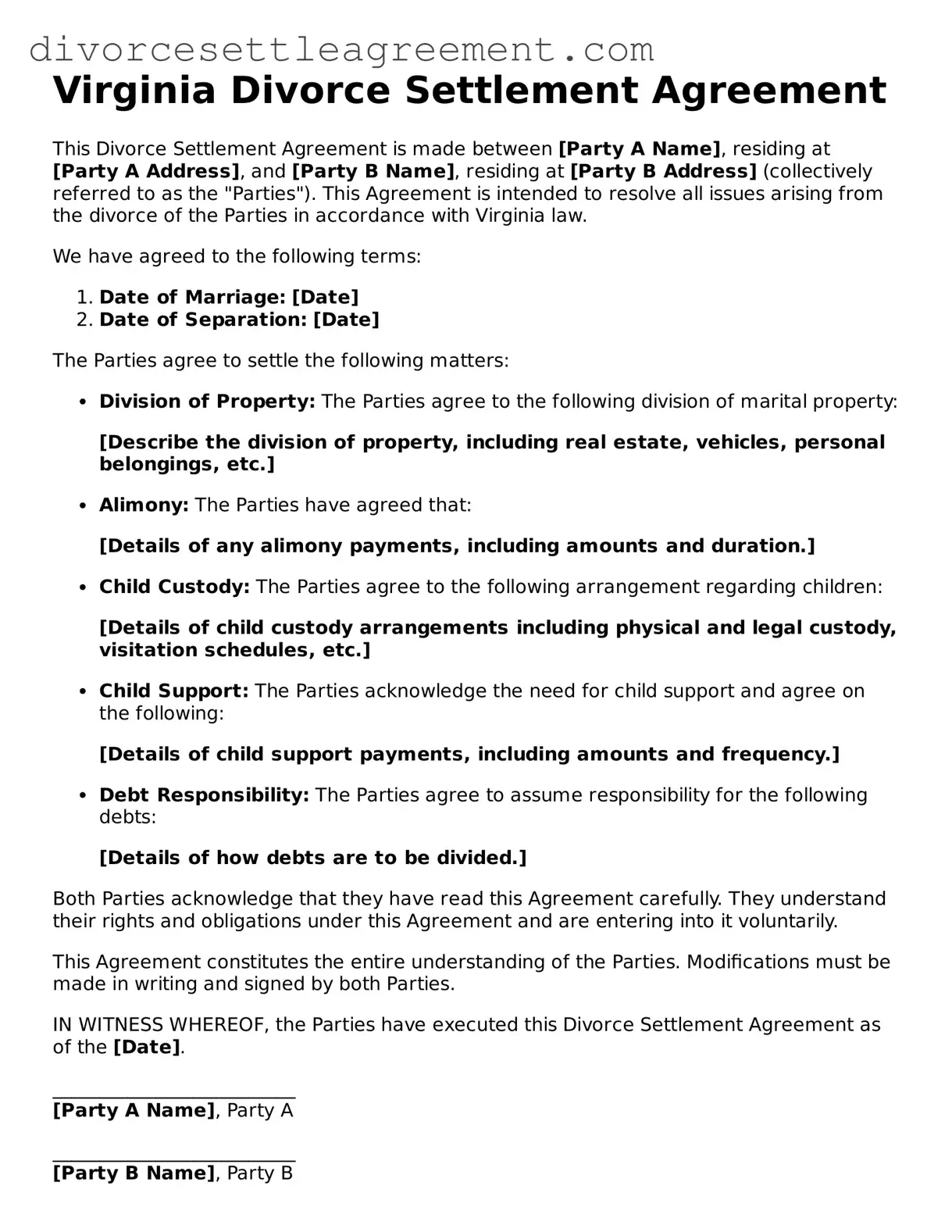What is a Virginia Divorce Settlement Agreement?
A Virginia Divorce Settlement Agreement is a legal document that outlines the terms agreed upon by both spouses during a divorce. This agreement typically covers property division, debt allocation, child custody, visitation, and support arrangements. It serves as a roadmap for how the couple will handle their responsibilities post-divorce.
Why is a Divorce Settlement Agreement important?
This agreement is crucial because it helps prevent future disputes between the parties. By clearly defining each spouse's rights and obligations, it reduces the likelihood of misunderstandings and conflicts after the divorce is finalized. Additionally, having a formal agreement can expedite the divorce process in court.
How do I create a Divorce Settlement Agreement?
To create a Divorce Settlement Agreement, both spouses should discuss and negotiate the terms they wish to include. It's advisable to document these discussions in writing. Once both parties agree on the terms, the agreement should be drafted formally, often with the assistance of a lawyer, to ensure it meets legal standards and is enforceable in court.
Can I modify the Divorce Settlement Agreement after it's signed?
Yes, a Divorce Settlement Agreement can be modified, but both parties must agree to the changes. If circumstances change significantly—such as job loss or a change in child custody needs—a modification may be necessary. It's best to document any changes formally and, if possible, seek legal advice to ensure compliance with Virginia law.
What happens if one party does not follow the agreement?
If one party fails to adhere to the terms of the Divorce Settlement Agreement, the other party can seek enforcement through the court. This may involve filing a motion for contempt, which can lead to legal consequences for the non-compliant party. Courts take these agreements seriously, so it's essential to follow the terms outlined.
Do I need a lawyer to draft my Divorce Settlement Agreement?
While it's not legally required to have a lawyer draft your Divorce Settlement Agreement, it is highly recommended. A lawyer can ensure that your rights are protected and that the agreement complies with Virginia law. They can also help clarify complex issues and provide guidance throughout the negotiation process.
Is the Divorce Settlement Agreement filed with the court?
Yes, the Divorce Settlement Agreement is typically filed with the court as part of the divorce proceedings. Once filed, it becomes part of the public record. The court will review the agreement to ensure it is fair and reasonable before finalizing the divorce. This step is essential for making the agreement enforceable.
